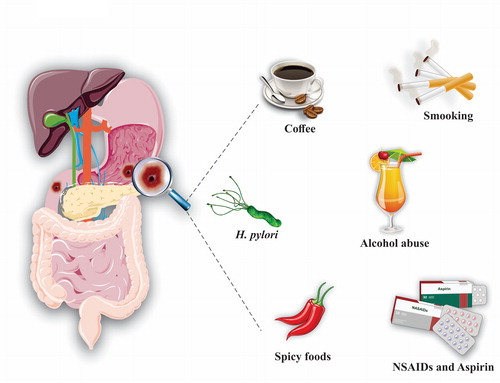Exploiting drug delivery systems for oral route in the peptic ulcer disease treatment

Peptic ulcer disease (PUD) is a common condition that is induced by acid and pepsin causing lesions in the mucosa of the duodenum and stomach. The pathogenesis of PUD is a many-sided scenario, which involves an imbalance between protective factors, such as prostaglandins, blood flow, and cell renewal, and aggressive ones, like alcohol abuse, smoking, Helicobacter pylori colonization, and the use of non-steroidal anti-inflammatory drugs.
The standard oral treatment is well established; however, several problems can decrease the success of this therapy, such as drug degradation in the gastric environment, low oral bioavailability, and lack of vectorization to the target site. In this way, the use of strategies to improve the effectiveness of these conventional drugs becomes interesting. Currently, the use of drug delivery systems is being explored as an option to improve the drug therapy limitations, such as antimicrobial resistance, low bioavailability, molecule degradation in an acid environment, and low concentration of the drug at the site of action. This article provides a review of oral drug delivery systems looking for improving the treatment of PUD.
Article information: (2021) Exploiting drug delivery systems for oral route in the peptic ulcer disease treatment, Journal of Drug Targeting, DOI: 10.1080/1061186X.2021.1904249
Summary of drug delivery systems for the treatment of ulcer peptic


